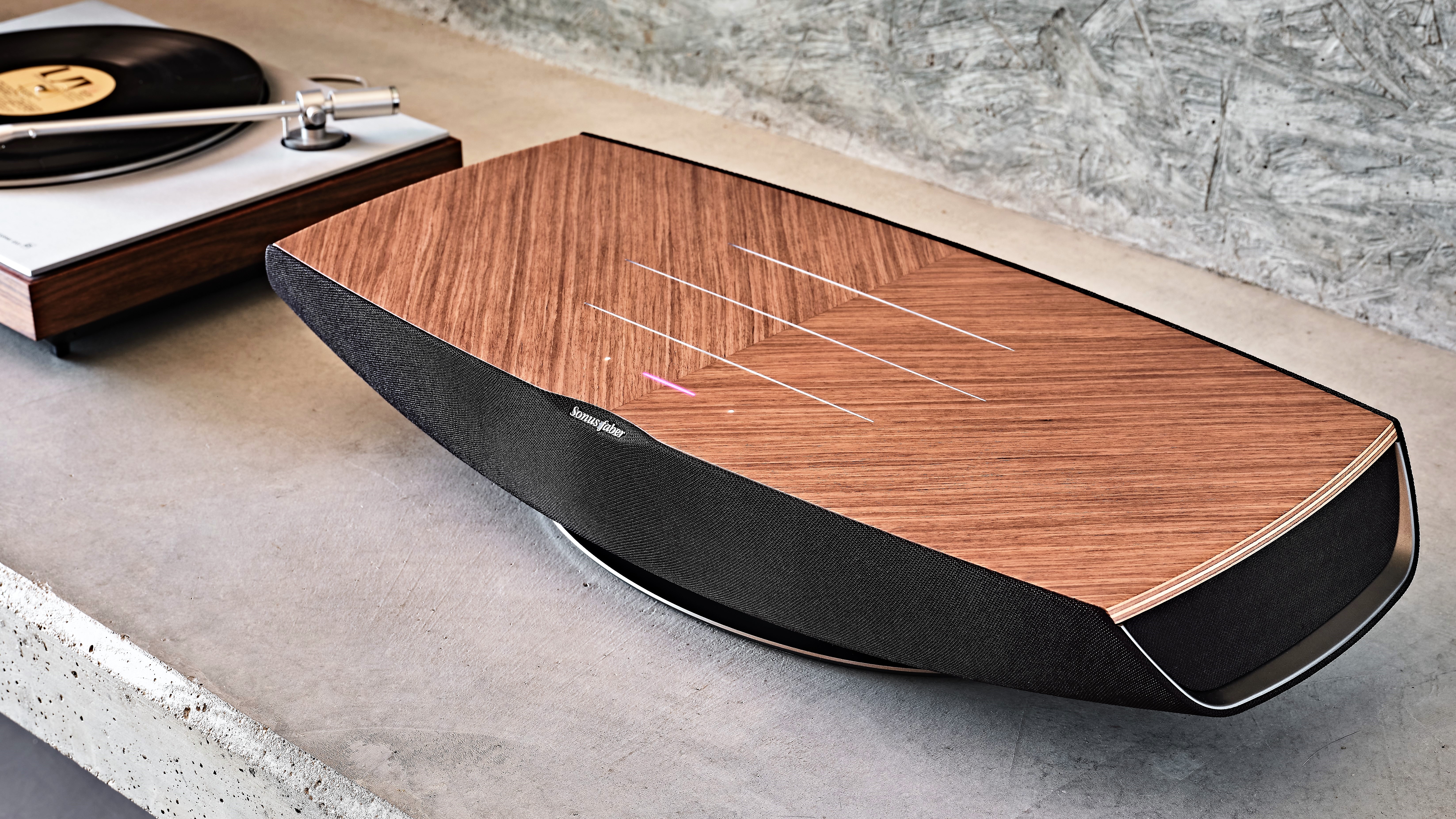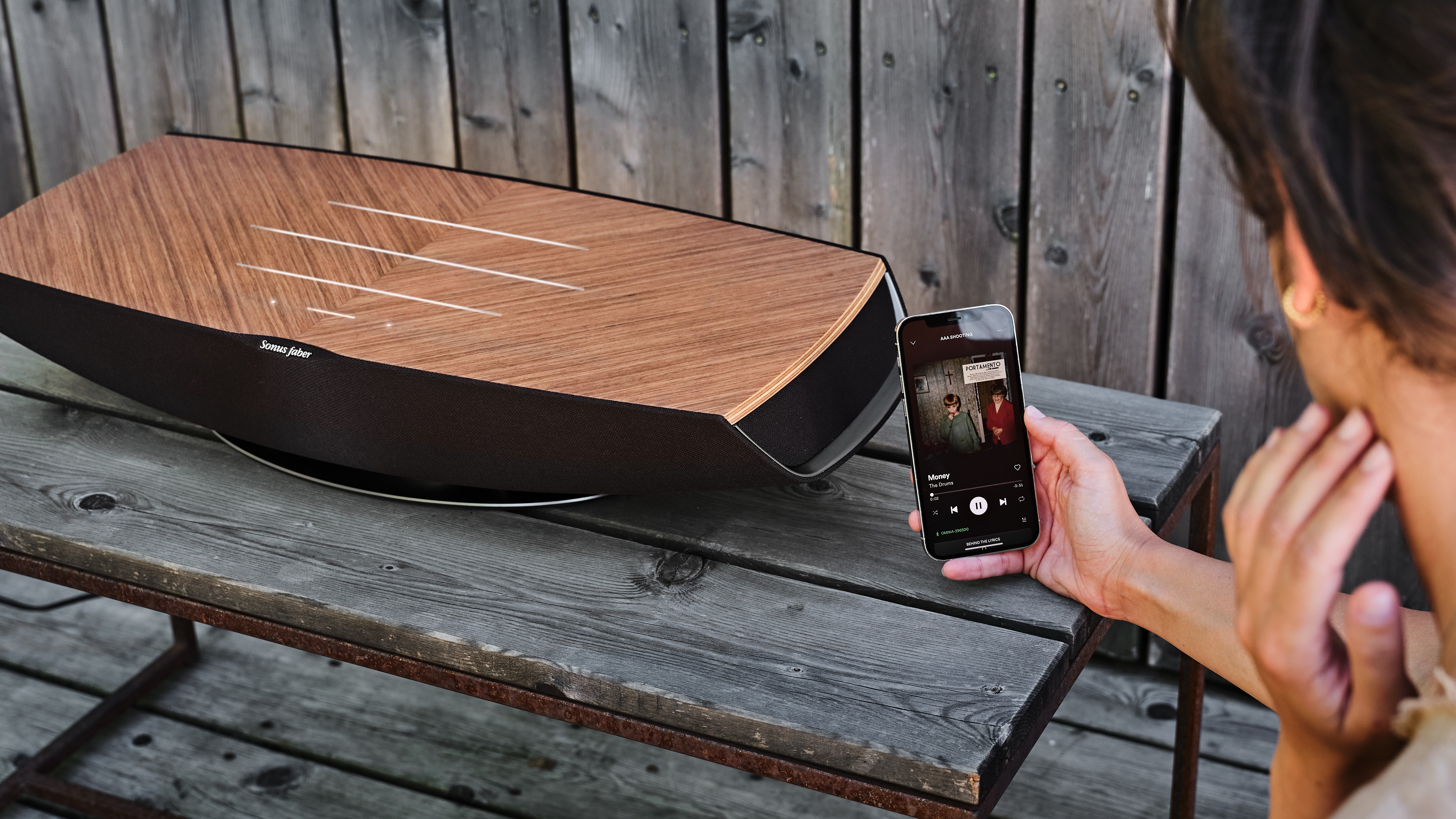I test music systems for a living — and this blows everything else away

When it comes to choosing the main music system for your home, it really does pay to think long term and to consider spending a little bit more. As an audio expert with more than 20 years experience in the industry, you might well be thinking that I would say that. And you'd be right.
But even in these tough economic times, there are still some occasions where I firmly believe that it really does make long term financial sense to splurge on certain purchases. The way I look at it is this. What may seem like a financial stretch right now, should have you reaping the sonic rewards from a great-sounding music system for years to come. And in my experience, you're really unlikely to ever regret spending more on a music system.
Most of us have one or two (possibly more) Bluetooth speakers dotted around the home. But when it comes to making the best connection to your favorite artists, you deserve so much more from the main music system in your home.
The Omnia has Wi-Fi smarts, touch controls, and a level of luxurious finish that the majority of integrated speaker systems just can't match.
Don’t get me wrong, I’m not dissing any of the best Bluetooth speakers we’ve tested Tom’s Guide in any way whatsoever. They've all been thoroughly reviewed and assessed, and come highly recommended for their strengths. In fact, I've been blown away by several entry-level speakers recently, including the JBL Flip 6, and the Sonos rivalling Denon Home 150 smart speaker. But as small speakers that are built to a price, they do have some limitations.
High expectations
I know my way around the audio sector from entry-level to audiophile, and I think you'd be surprised at what can be achieved when you spend a bit more on a home music system. And I'm not necessarily talking about the kind of setups that use traditional stereo speakers and separate hi-fi components, although these are still a firm favorite for many audiophiles when it comes to achieving hi-fi nirvana. I'm talking about integrated speaker systems that strike a magical balance between form, functionality, and performance.
I’ve seen plenty of speakers and music systems come through my front door over the years, but without question the most striking to grace my home in recent time is the Sonus faber Omnia with its tactile surface and illuminated touch controls. For anyone unfamiliar with the brand, Sonus faber is an Italian audio specialist best known for its range of premium loudspeakers that encapsulates style and effortless audiophile performance with every speaker model it puts out.

Sonus faber Omnia: A music system with style and substance
The Omnia all-in-one wireless speaker system first caught my eye when it launched in February 2022. It may be a first foray into the world of one-box music systems for Sonus faber, but the sumptuous styling follows the company's luxury tradition. It really is quite a looker, and will wow anyone who claps eyes on it.
Get instant access to breaking news, the hottest reviews, great deals and helpful tips.
As you might expect, its beauty is more than skin deep. Although it looks nothing like a conventional music system, it has everything the modern music listener could want integrated into its super-stylish, Italian-designed walnut cabinet — a version with a graphite top plate is also available. Both options are priced at $1,999 / £1,599 / AU$3,495, and are available through specialist audio retailers like Crutchfield.

OK, this is more expensive than many of the best Dolby Atmos soundbars or best TV sound upgrades I've tested, but the Omnia offers considerable Wi-Fi smarts, touch controls, and a level of luxurious finish that the majority of integrated speaker systems I've seen just can't match. What's more, the Omnia looks like it was built to last forever.
The Omnia will work in pretty much any home setup I can think of. Physical connectivity options run to HDMI ARC, RCA analog, while wireless extends to Bluetooth with aptX HD support, AirPlay 2, Chromecast, Tidal Connect, and Spotify Connect. It's Roon ready if you subscribe to the integration platform that brings all your digital music libraries and playlists together in one place, and you can even hook up a hi-fi turntable such as any of the recommendations in our best record players buying guide. About the only connection options missing are optical digital and USB ports, but this Is very unlikely to be a deal breaker for most users.
In terms of Wi-Fi smarts, the Omnia can integrate with other devices via the Apple Home ecosystem over iOS, as well as Google Home.
Sonus faber Omnia: Seriously good sound

The talented Omnia hides seven speakers beneath its luxury exterior; two tweeters and two midrange speakers fire out sound at the front, while two full-range speakers fire out sound at the sides of the cabinet. A 6.5-inch woofer pushes bass downwards through the base of the cabinet.
The multi-driver speaker array is driven by built-in amplification that claims a total power output of 470W. Advanced DSP (digital signal processing) called Crescendo ensures you hear the separation of the left and right channels for traditional stereo sound even though it's a one-box enclosure. Boundary placement can be specified for free space or wall placement in the speaker's web-based settings application.
The Omnia looks more like a TV soundbar than a music system. With it in place beneath my screen, it brought a boost to my TV sound when connected via HDMI ARC — although you'll need to ensure that its 6-inch height doesn't foul the bottom of your TV screen as it did mine.
Despite the soundbar-esque shape and side-firing speakers, there's no Dolby Atmos processing on board. Nevertheless, the Omnia did a solid job of conjuring up the acoustic space of whatever was on the TV screen, pushing out sounds to the sides of the soundstage, while dialog was clearly maintained and sat above the action fixed to the center of the soundstage.
Instruments have their own space within the soundstage, and bass levels are strong enough to carry tracks along with hi-fi levels of pace and rhythm.
The Omnia's greatest strength is with music. Sonus faber's hi-fi heritage means this one-box music system has all the audio credentials of its speaker designs. I am a fan of the company's petite Lumina I bookshelf loudspeakers, and the Omnia sounds like it has a similar warm house sound and an ability to show off hi-res music streams from Tidal Connect.
Instruments have their own space within the soundstage, and bass levels are strong enough to carry tracks along with hi-fi levels of pace and rhythm. It goes pretty loud, too, filling my medium-sized living room with a sufficient sound level to ensure I can appreciate the full scale of my music.

Of course, it sounds pretty good with Spotify Connect too, and any other music streaming service you care to try. With it currently placed just breath my TV screen, though, I've yet to hook up a turntable to try it out with vinyl. The versatility is very appealing to today's music listeners, and wouldn't mind wagering that its performance with the old-school analog format is just as strong as it is with digital streaming.
Sonus faber is known among audiophiles for its classic speaker designs. The Omnia speaker system is a remarkably refreshing and beautiful one-box design that breaks with tradition and brings its audio know-how to a music system built for today's generation of audio fans. It may seem expensive, but I'd argue that the Omnia has all the right facilities and audio-cred to keep you listening for years to come. Go hear it.
Next: 5 luxury music systems I've tried that deliver great sound in style.

Lee was Tom's Guide's audio editor, where he covered all things audio for Tom's Guide, including headphones, wireless speakers and soundbars and loves to connect and share the mindfulness benefits that listening to music in the very best quality can bring. As a former editor of the U.K.'s Hi-Fi Choice magazine, Lee is passionate about all kinds of audio tech and has been providing sound advice to enable consumers to make informed buying decisions since he joined Which? magazine as a product tester in the 1990s. Lee has joined the passionate audio experts at audiograde.uk where he writes about luxury audio and Hi-Fi.
